Architizer is thrilled to reveal the 12th Annual A+Awards Finalists. See which projects and firms made the cut and have your say in who wins a coveted Popular Choice A+Award. Cast your vote today >
Though traditions established over the course of centuries, worship buildings have come to be associated with pointed arches, intricate carvings, gilded finishes, ornate domes and more. But as worship rituals adapt to current times, so has the architecture that accommodates them. Over the past decade, cutting-edge winners of the A+Awards have reimagined how religious symbolism can be successfully translated to abstract ideas and geometric forms that fit better with the architecture of culture today.
This this article takes a chronological look at the development of designs that have new standards for religious buildings over the course of the past ten years. This collection demonstrates a growing global focus on geometric volumes, which will surely impact design and worship practice in the coming years.
2013: Capilla del Lago
Di Vece arquitectos
Jury Winner, 2013 A+Awards, Institutional – Religious Buildings
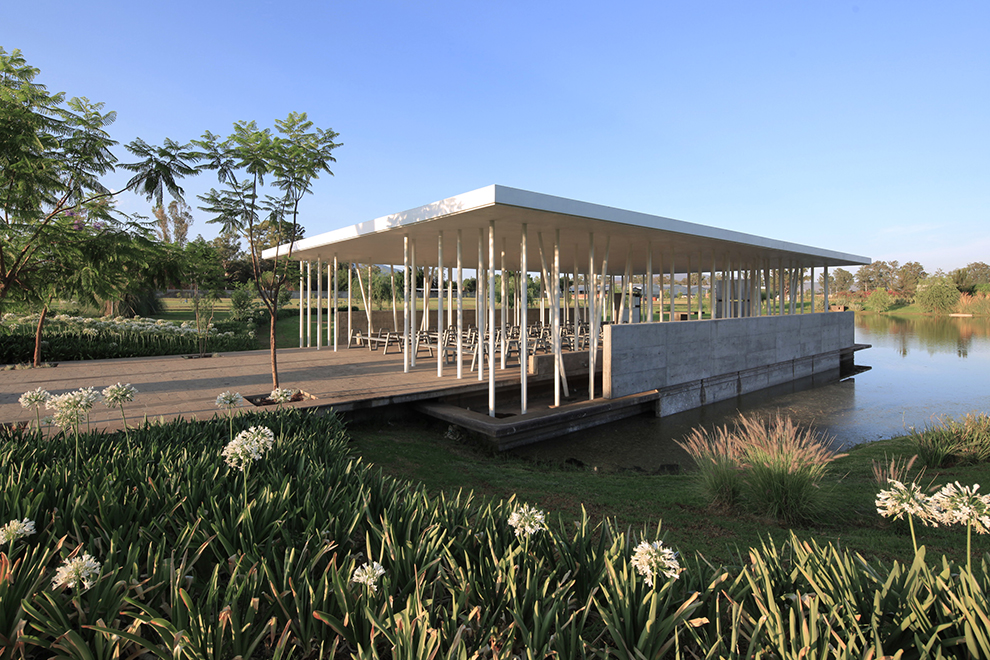
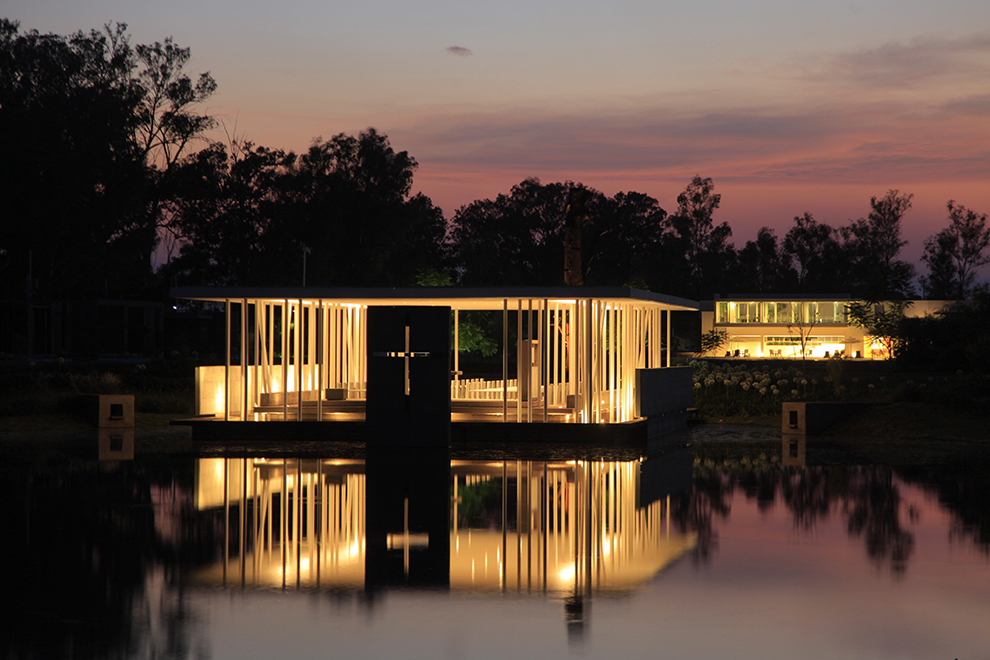 Capilla del Lago is a conceptual design located at the core of a residential area, intending to make praying a part of the residents’ daily lives. The roof of the chapel is held up by slender columns that are illuminated on dark nights — a visual metaphor for the filaments of energy that illuminate people’s lives. Di Vece arquitectos designed as an open and boundless structure with the goal of making a space that was more inviting and accessible to everyone. The far end of the chapel opens up to the water, where a carved cross stands just a few feet away.
Capilla del Lago is a conceptual design located at the core of a residential area, intending to make praying a part of the residents’ daily lives. The roof of the chapel is held up by slender columns that are illuminated on dark nights — a visual metaphor for the filaments of energy that illuminate people’s lives. Di Vece arquitectos designed as an open and boundless structure with the goal of making a space that was more inviting and accessible to everyone. The far end of the chapel opens up to the water, where a carved cross stands just a few feet away.
The design is a very modern and minimal take on a classic chapel. All conventional elements typically associated with traditional chapels are stripped away, leaving behind a roof and supporting columns that offer an open sanctum for worship and reflection by the water.
2014: Autobahn Church
schneider+schumacher | Wilnsdorf, Germany
Popular Choice, 2014 A+Awards, Religious Buildings
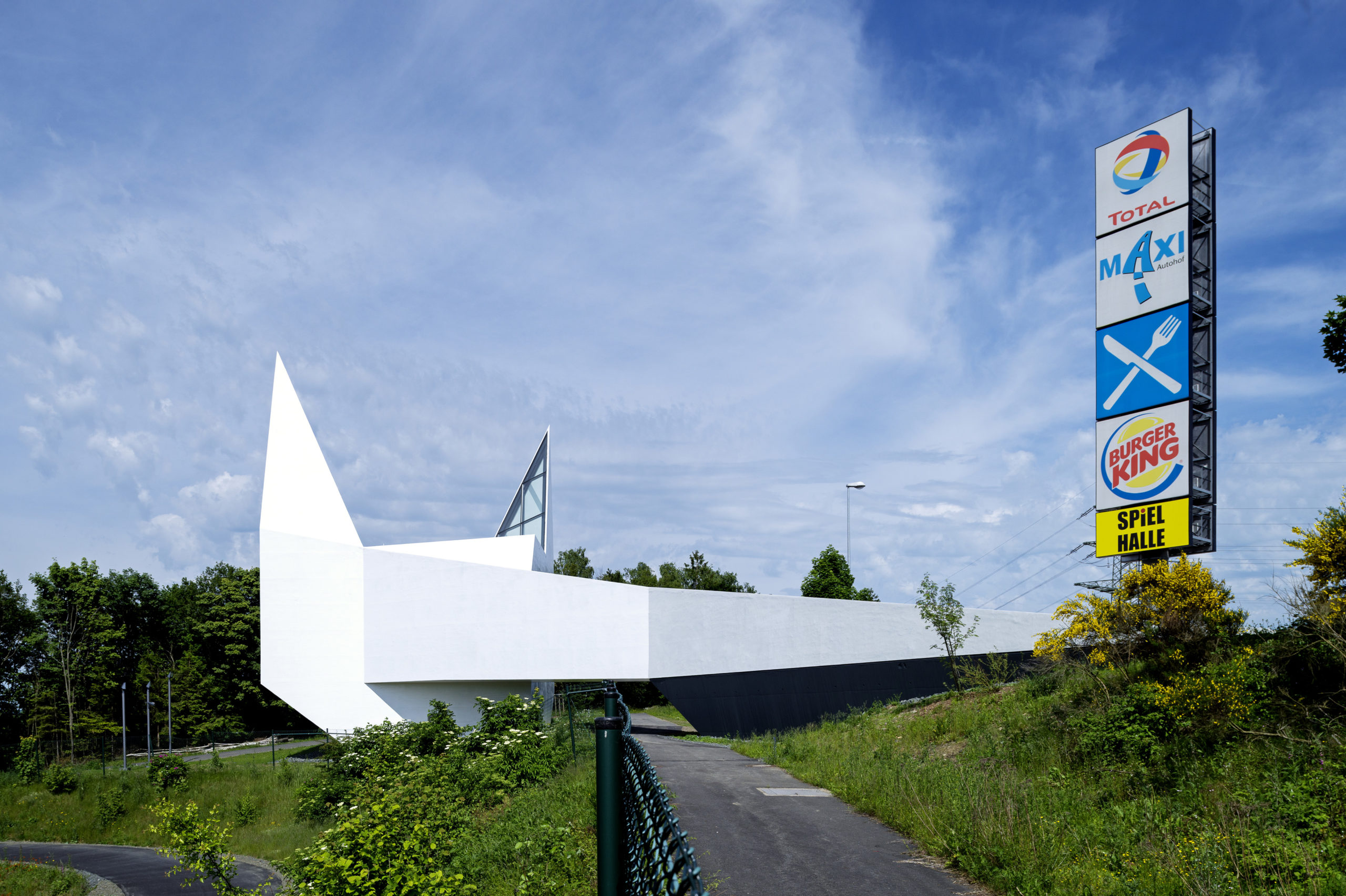
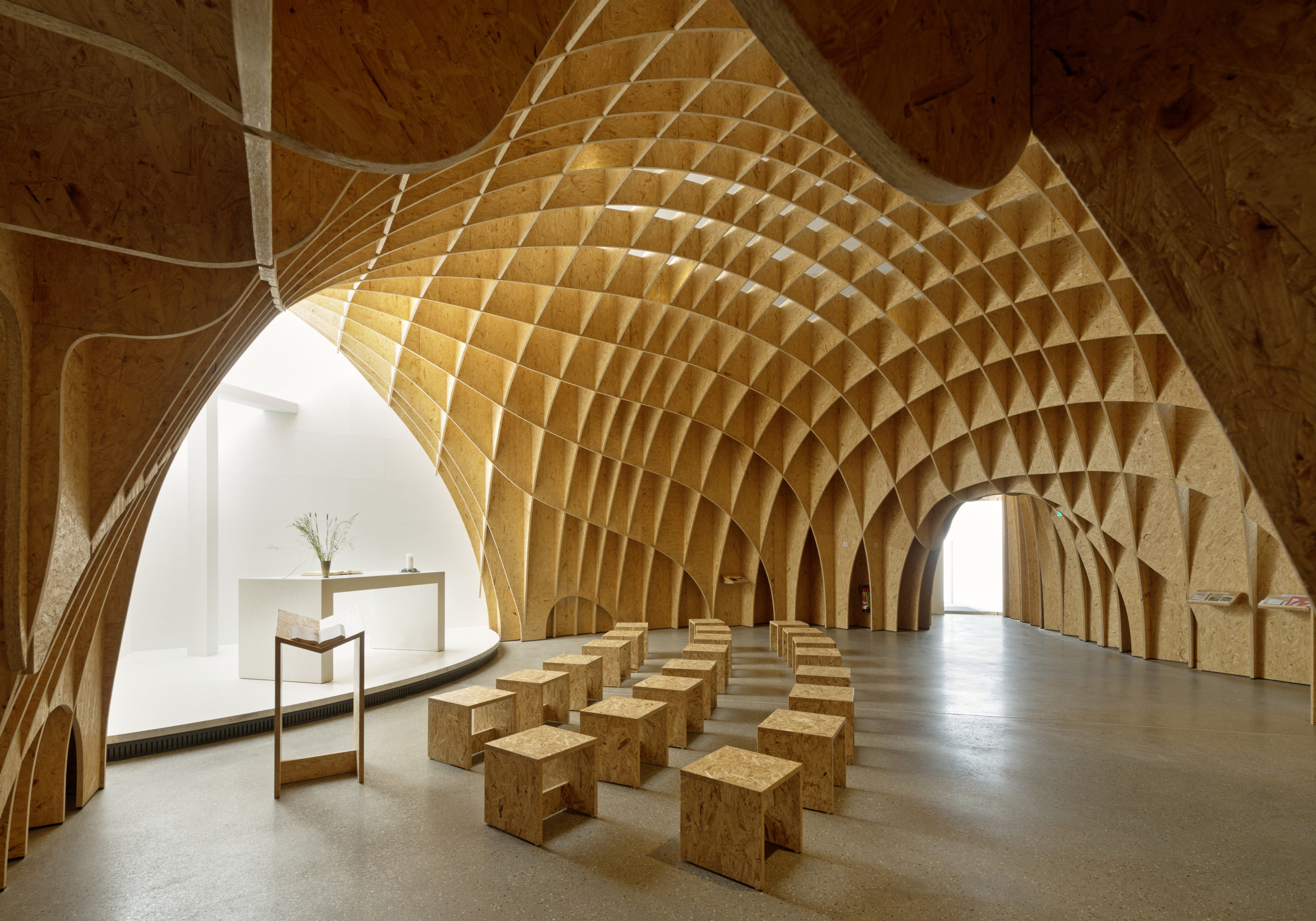
Images by Jörg Hempel
The sharp angles and crisply modern exterior of the church offers a sharp contrast to the curving wooden warmth of the interior space. From the outside, the mass is formed by a series of stark white polygons. The insides are composed of curved wooden panels that intersect to create vaults. As there are no fenestrations on the walls and light enters the church through the two spires.
Digital techniques played a big role in this design. Computer programming was used to create the digital forms and optimize the material used for the dome. These elements were manufactured off-site and then later assembled at the location. This church continues the trend of modernizing traditional worship spaces to elevate their form and the experience within.
2015: Community Church Knarvik
Reiulf Ramstad Arkitekter | Knarvik, Norway
Popular Choice, 2015 A+Awards, Religious Buildings & Memorials
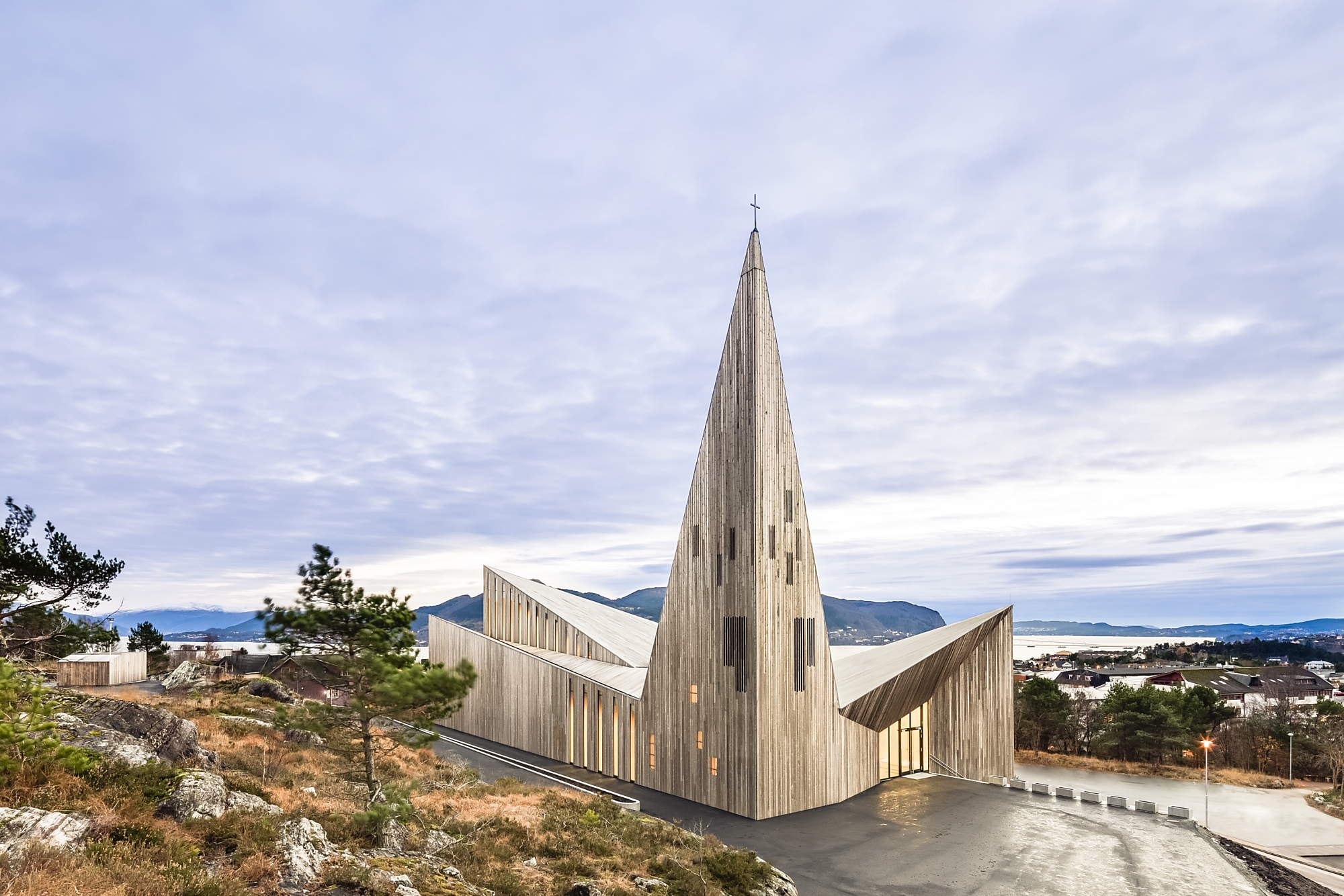
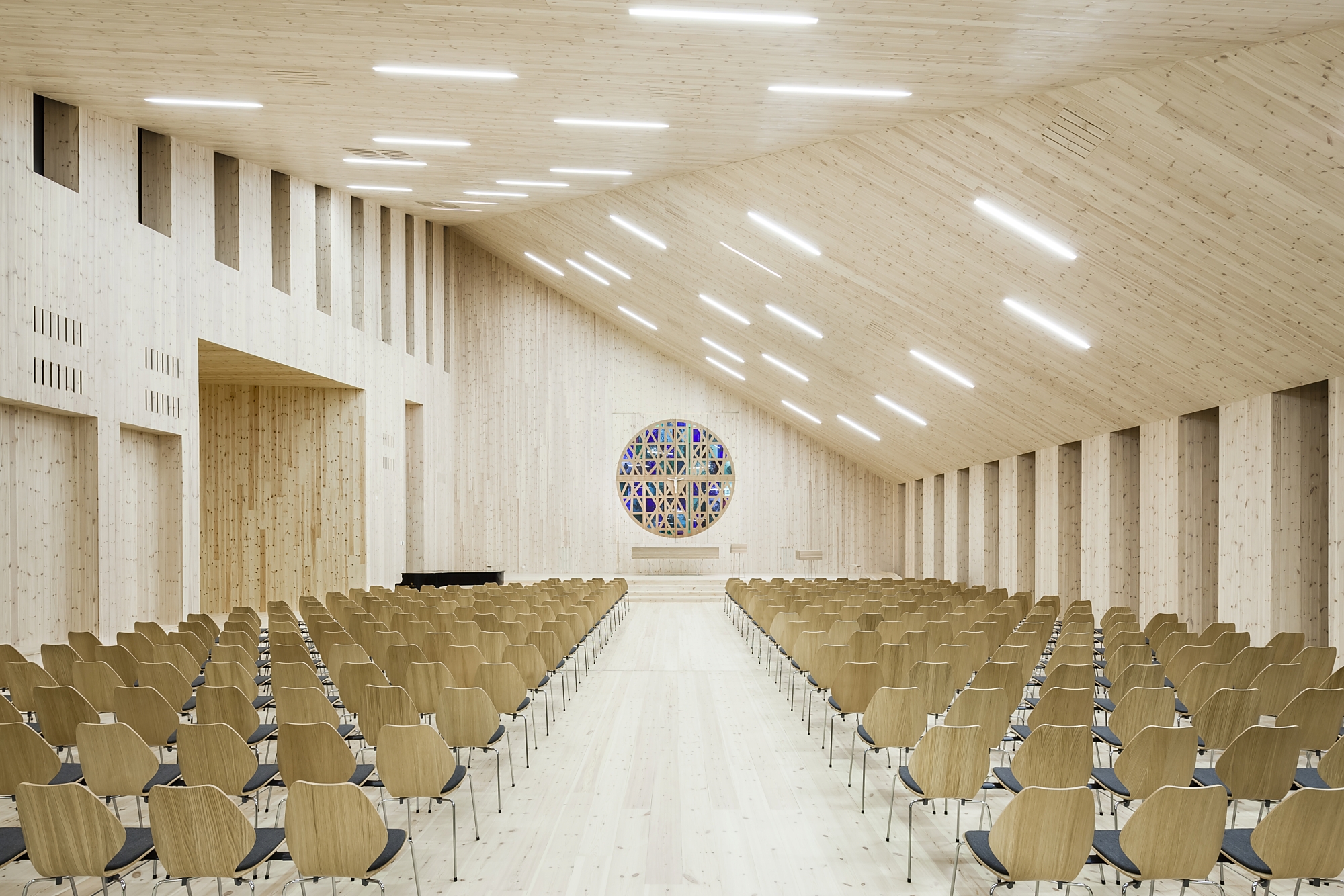
Images by Hundven-Clements Photography
This community church is located on the hillside and acts as a landmark for the local area. The spire, sanctuary and chapel are defined by bold geometric forms in natural materials that reflect its Norwegian origins. The external walls are covered with pre-weathered pine wood and the interiors are finished with a lighter variant. Inside the building, the sacred functions are separated from the administrative functions within using levels. These levels are connected by an internal church square and an atrium staircase.
Much like the previous project, the design of this church includes sharp geometries and minimal ornamentation. But here one can see more fenestrations to allow light inside. This is done by creating narrow windows that blend in with the wood paneling on the walls.
2016: Sayama Forest Chapel
Hiroshi Nakamura & NAP | Tokorozawa, Japan
Popular Choice, 2016 A+Awards, Religious Buildings & Memorials
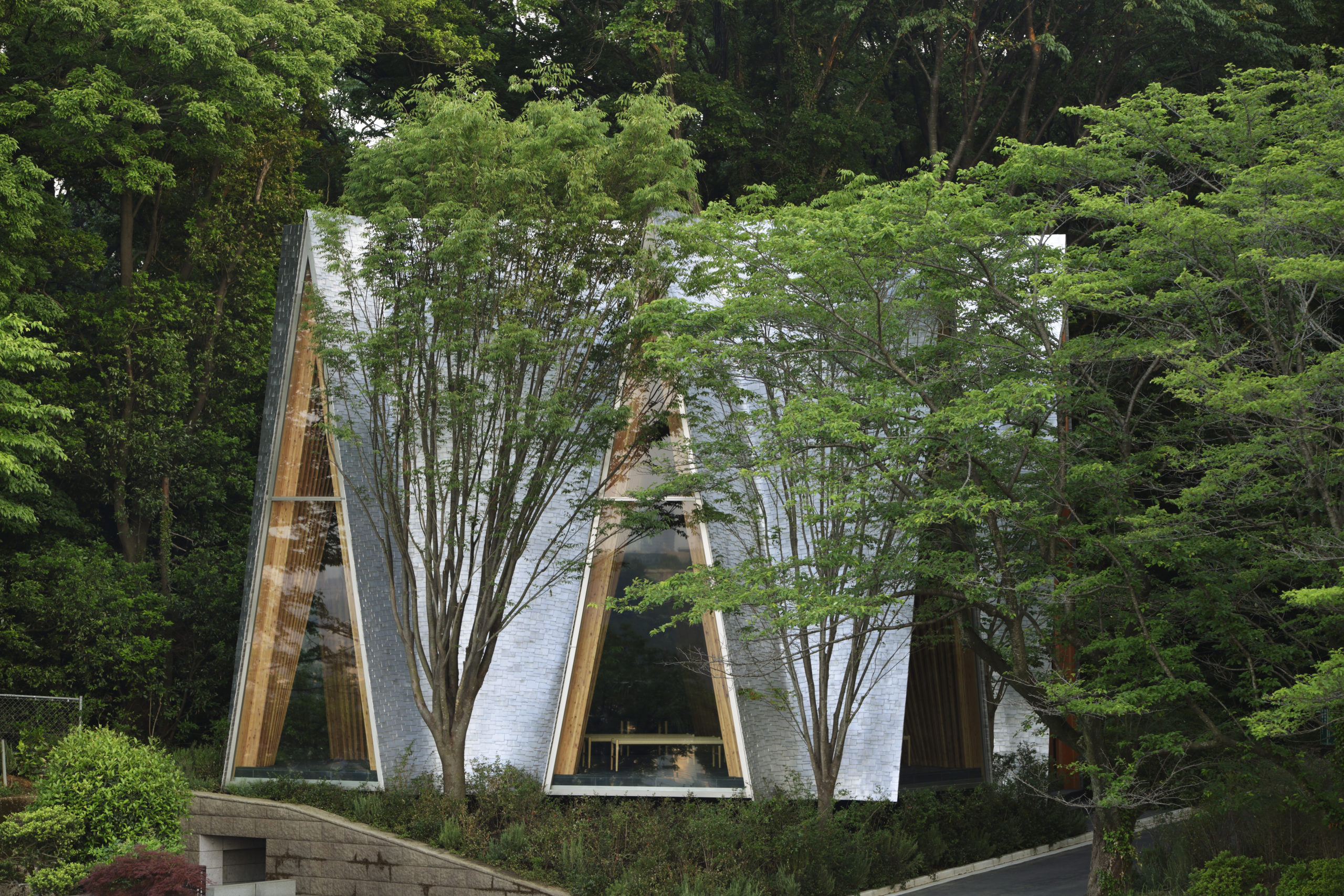

Images by Nacasa & Partners inc.
Continuing the trend of sleek and minimal worship spaces is the Sayama Forest Chapel in Japan. Inspired by the forest that surrounds it, the design caves inward, avoiding any damage to the tree branches surrounding it. The entire form is envisioned as a series of leaning columns set against each other to recreate a traditional Japanese Gassho structure. Handcrafted cast aluminum tiles with rippled surfaces make cover its roof.
With their design, Hiroshi Nakamura & NAP aimed to tie nature and prayer together. The building draws on the soothing and nurturing touch of nature to heal those in deep grief or in need some support.
2017: The Bahá’í Temple of South America
Hariri Pontarini Architects | Santiago, Chile
Popular Choice, 2017 A+Awards, Religious Buildings & Memorials
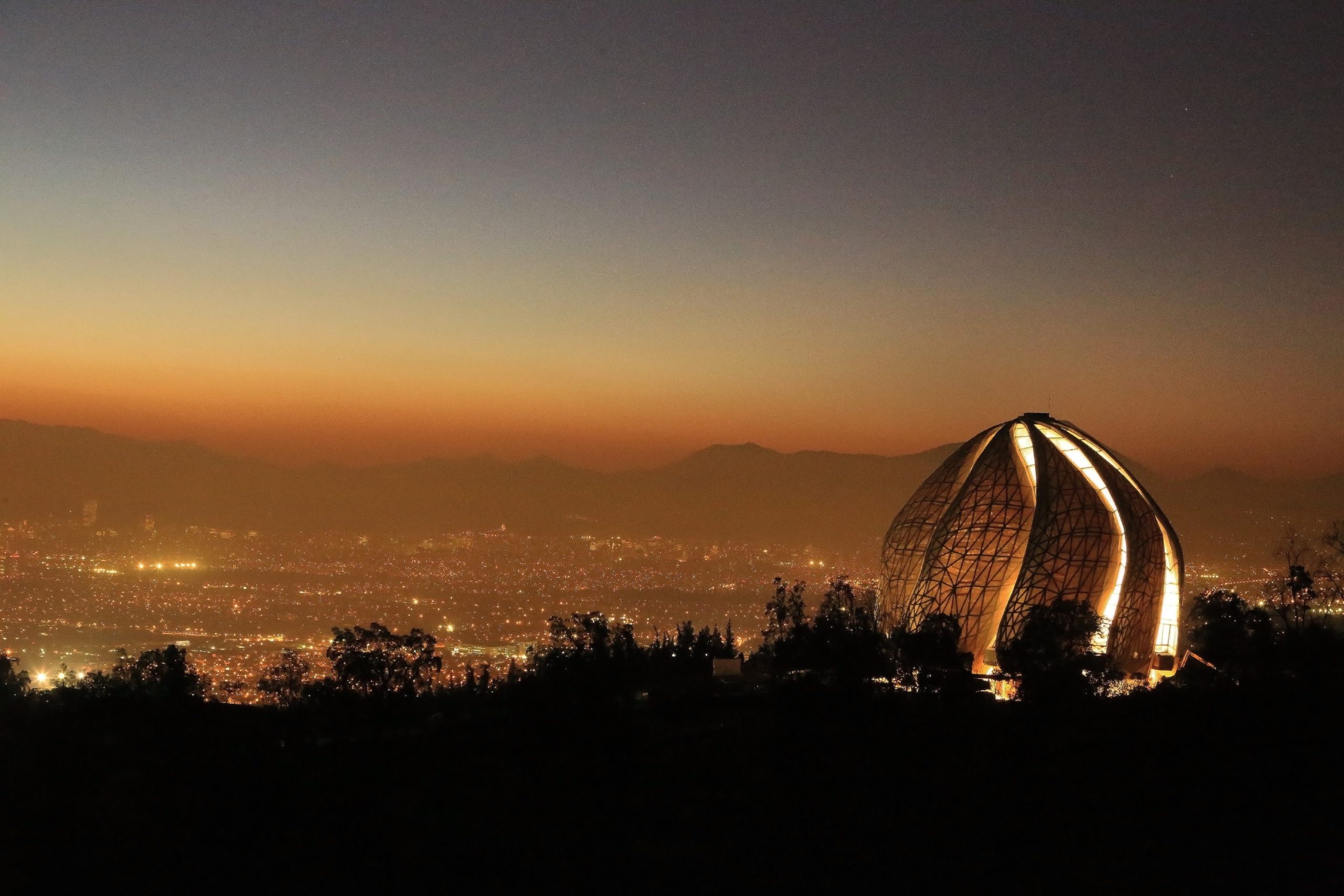
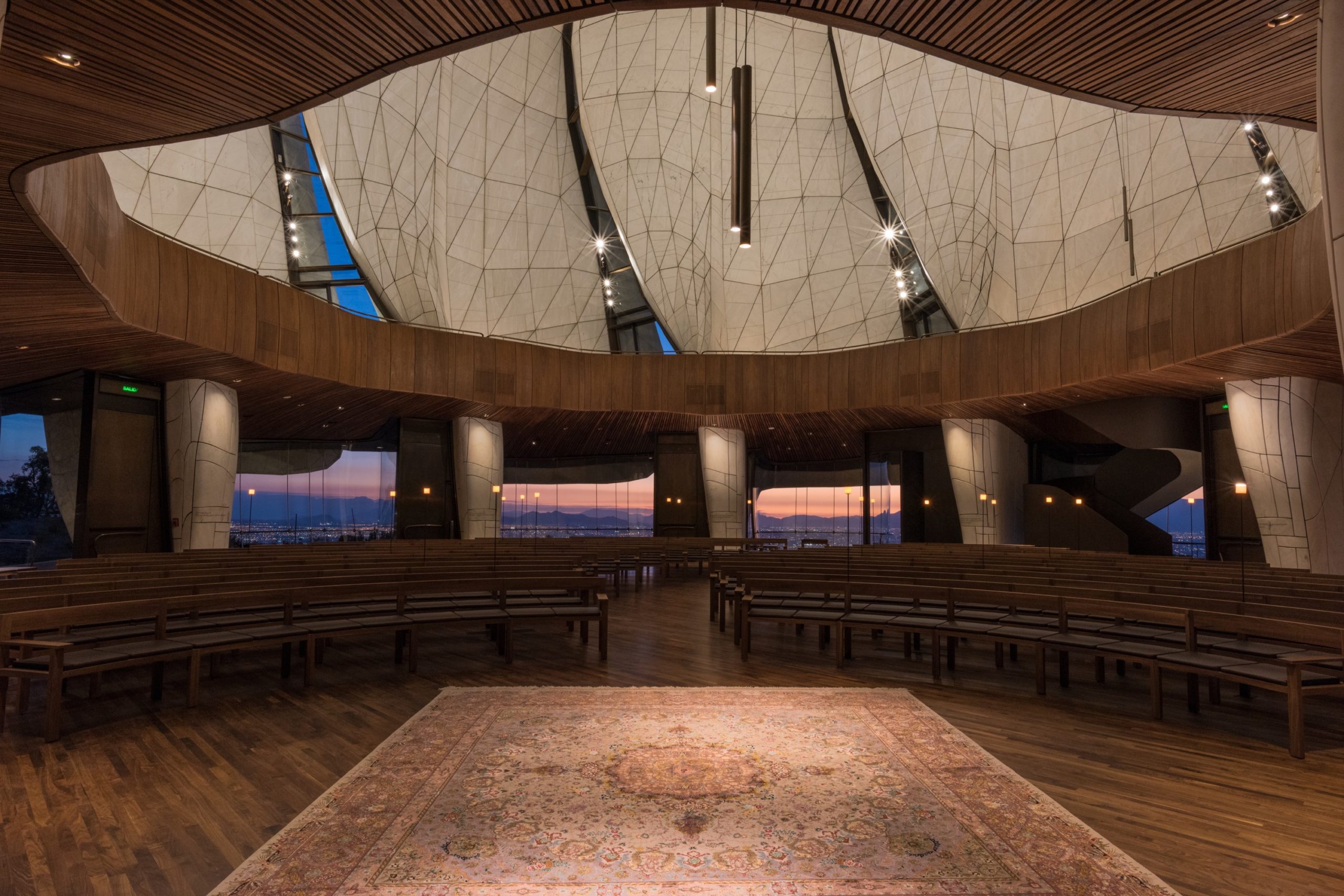 The flower-shaped temple is inspired by a variety of elements: sunlight filtering through trees, woven Japanese bamboo baskets and the complex lines left behind by shattered glass. The structure appears dynamic even though it is stationary and seems like it is floating over the ground. The dome is made up of Portuguese translucent marble and cast glass panels that are supported by a network of engineered steel members.
The flower-shaped temple is inspired by a variety of elements: sunlight filtering through trees, woven Japanese bamboo baskets and the complex lines left behind by shattered glass. The structure appears dynamic even though it is stationary and seems like it is floating over the ground. The dome is made up of Portuguese translucent marble and cast glass panels that are supported by a network of engineered steel members.
Light is a big factor in this design. Throughout the day, the different colors of the sky fall upon the surfaces to create a picturesque scene. Once it is dark, the light from within peeks out through the openings in the petals. This design accommodates people of all faiths; it is a sanctuary for all who are seeking a quiet space for meditation and contemplation.
2018: Our Lady of Fátima Chapel
Plano Humano Arquitectos | Idanha a Nova, Portugal
Popular Choice and Jury Winner, 2018 A+Awards, Religious Buildings & Memorials

 Two trapezoidal pieces put together in a tent-like arrangement form the dominant aesthetic of this structure. Drawing from the scouting experience, the pointed upper edge of the structure imitates a scout’s scarf and symbolizes a commitment to the movement. The lack of doors or partitions reflects the building’s openness to everyone, at all times. The roof is also supported by 12 wooden beams as a nod to the 12 Apostles. This structure is accompanied by several wooden logs arranged to act as seating.
Two trapezoidal pieces put together in a tent-like arrangement form the dominant aesthetic of this structure. Drawing from the scouting experience, the pointed upper edge of the structure imitates a scout’s scarf and symbolizes a commitment to the movement. The lack of doors or partitions reflects the building’s openness to everyone, at all times. The roof is also supported by 12 wooden beams as a nod to the 12 Apostles. This structure is accompanied by several wooden logs arranged to act as seating.
The chapel shows how religious symbolism can be showcased using the simplest forms and no ornamentation. Plano Humano Arquitectos translated several Christian ideologies into simplistic forms that blend in with the site and the building. As the years go by, we see that spaces for faith are adopting more conceptual ways of adopting religious ideas instead of displaying them on walls as decorative elements. The focus has turned to the experience of spaces instead of how grand they appear.
2019: Bosjes Chapel
Steyn Studio | Witzenberg, South Africa
Popular Choice, 2019 A+Awards, Religious Buildings & Memorials
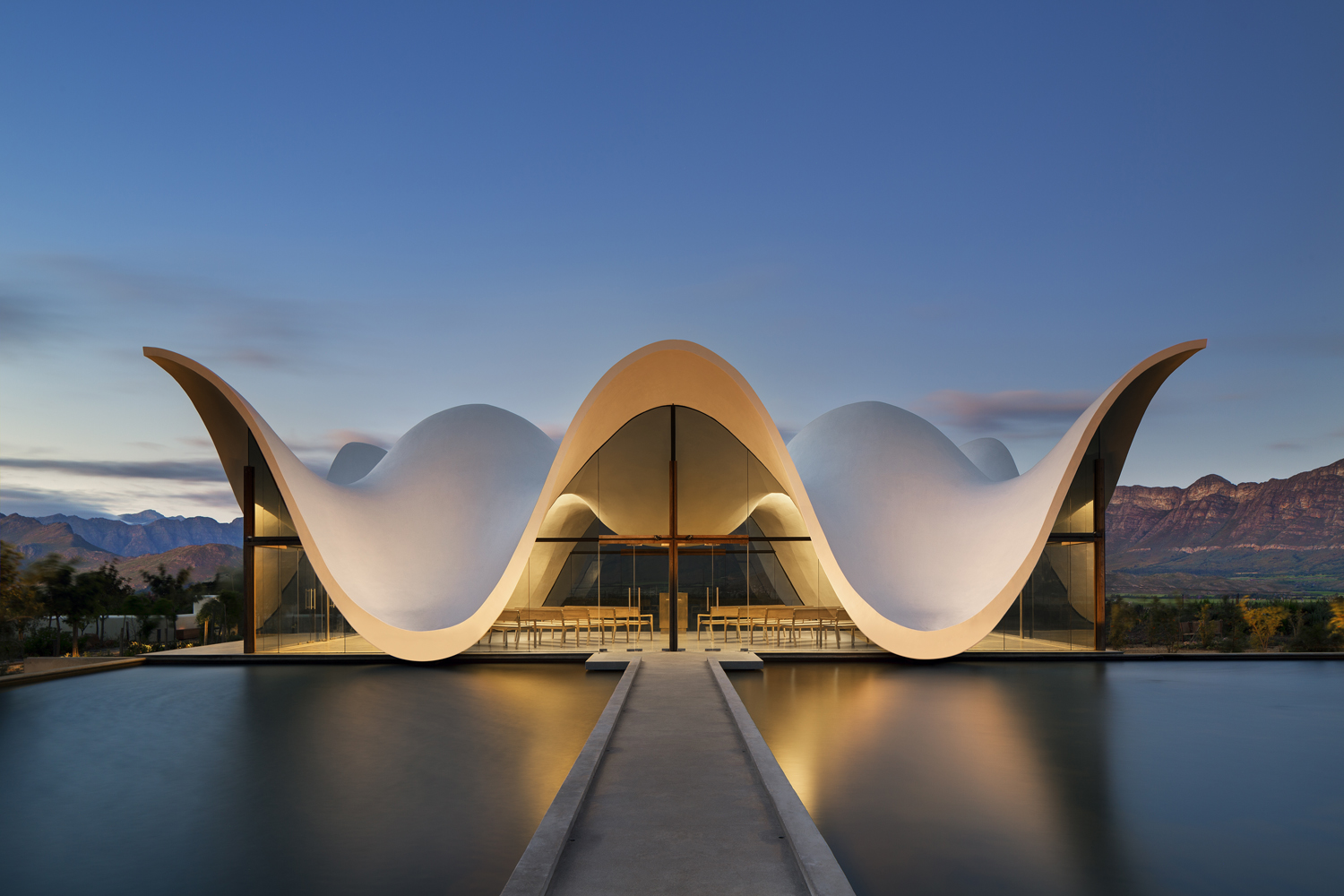
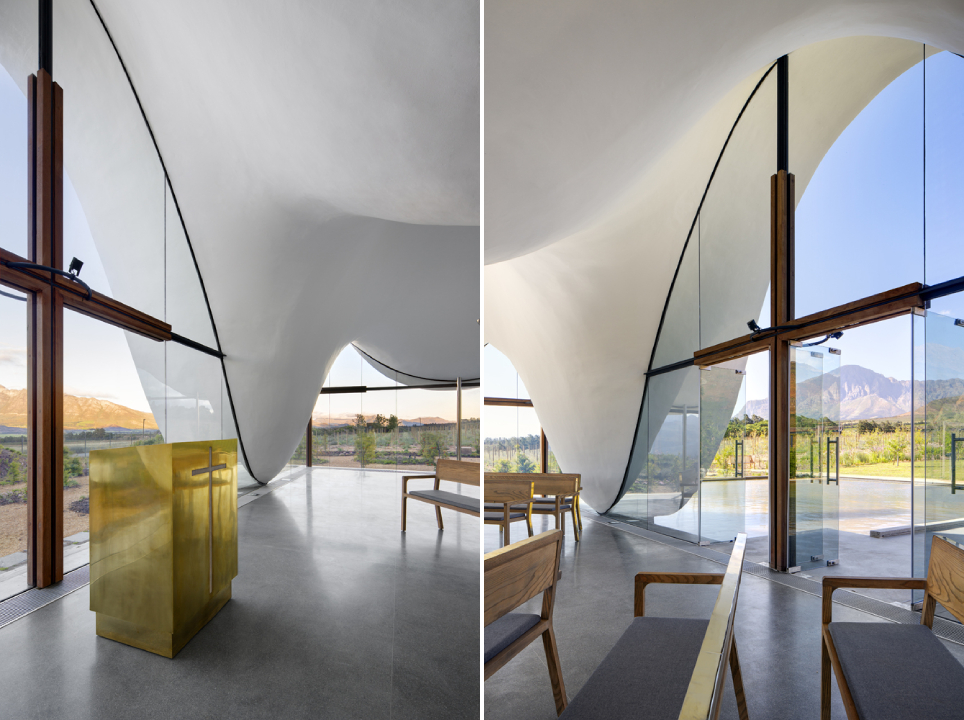 While not polygonal in form, the Bosjes Chapel’s design is still very minimal and open. The roof of the chapel curves into valleys and peaks, much like the mountains surrounding it. The thin concrete shells of the roof continue down to the ground to incorporate the structural system within the parabolic form itself.
While not polygonal in form, the Bosjes Chapel’s design is still very minimal and open. The roof of the chapel curves into valleys and peaks, much like the mountains surrounding it. The thin concrete shells of the roof continue down to the ground to incorporate the structural system within the parabolic form itself.
Once again, the aim of the design is to create a reflecting chamber that connects visitors with the natural setting around and has them experience God’s creation. This is done by creating a form that imitates nature and also adding large openings that allow visual connectivity on all sides.
2020: Saemoonan Church
Lee Eunseok+KOMA | Seoul, South Korea
Jury Winner, 2020 A+Awards, Religious Buildings & Memorials

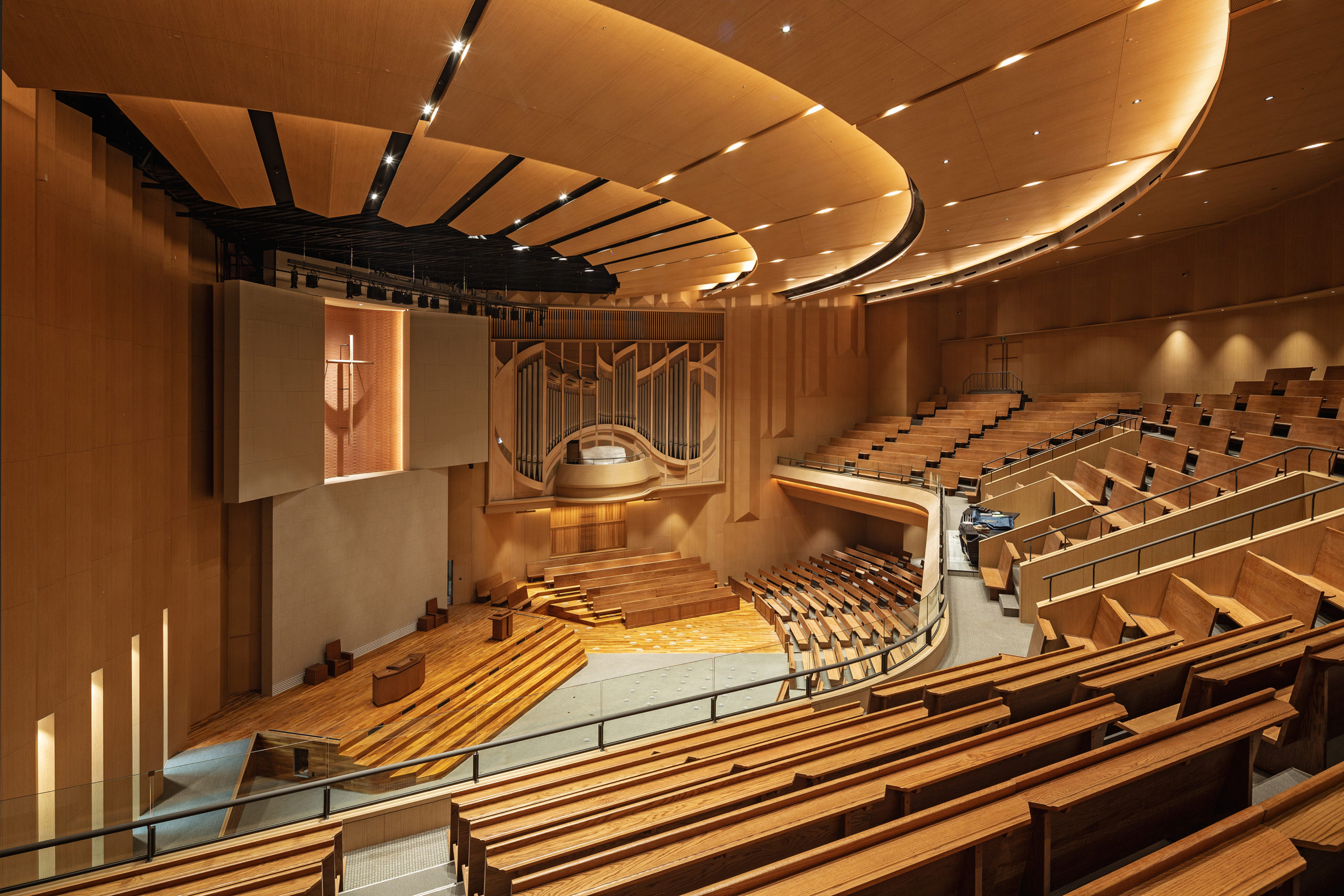
Images by Yoon Joon-hwan and Juneyoung Lim
Saemoonan Church’s form resembles a mother’s arms reaching towards the sky. Moving away from the use of spires, the project features a curved form that turns to the sky. The curves are meant to symbolize God’s love and mercy. With the building, one can also see other Christian symbolism turned into more abstract forms within the design.
Lee Eunseok+KOMA demonstrate a growing tendency in architecture — an increased consciousness of the functional needs of churchgoers and adapting the traditional church architecture to meet these needs. This sentiment has resulted in buildings that might not look like traditional chapels but still encourage community and a sense of comfort.
2021: Dysis Church of Poly Shallow Sea
Shanghai United Design Group Co., Ltd. | Sanya, China
Popular Choice, 2021 A+Awards, Religious Buildings & Memorials
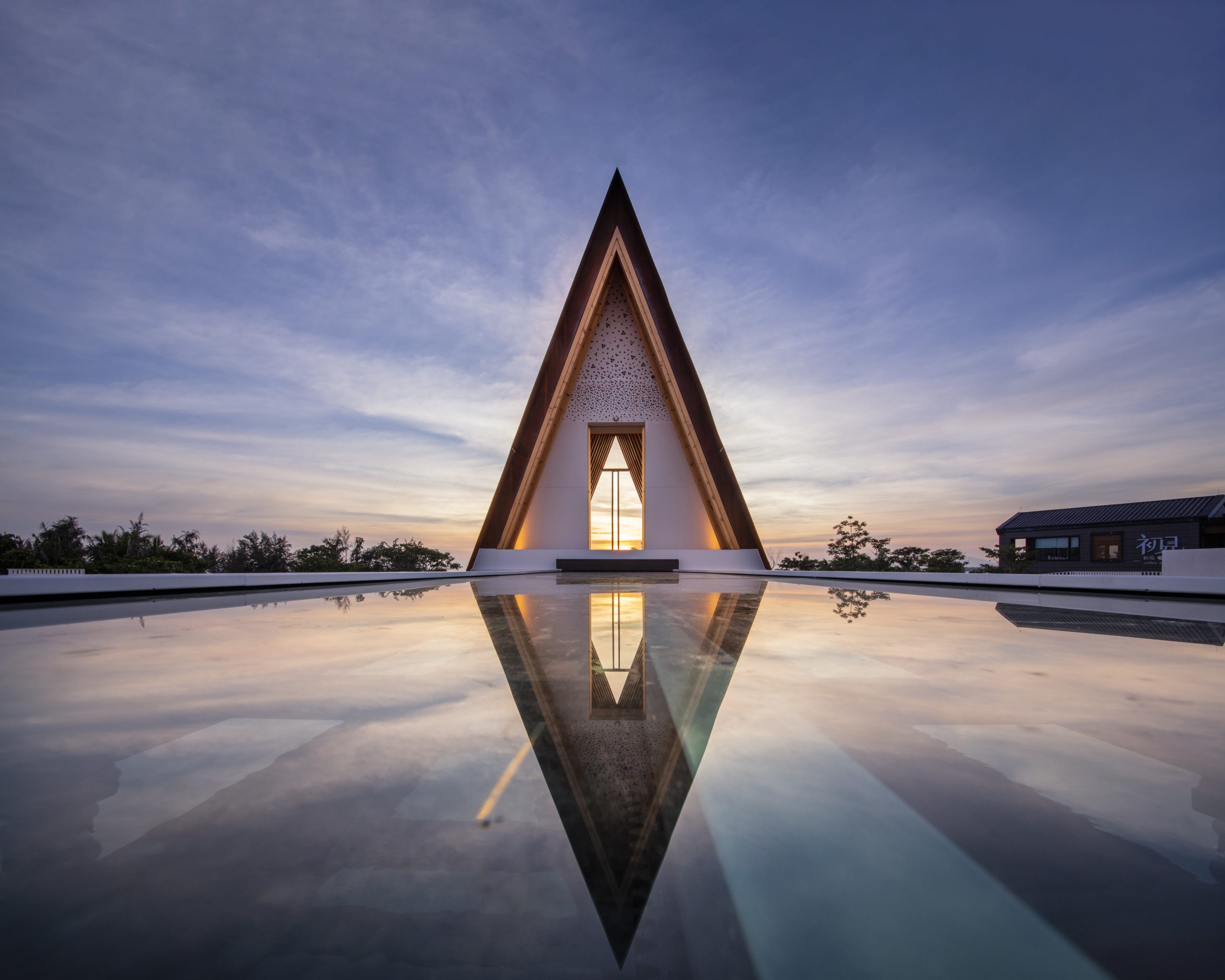
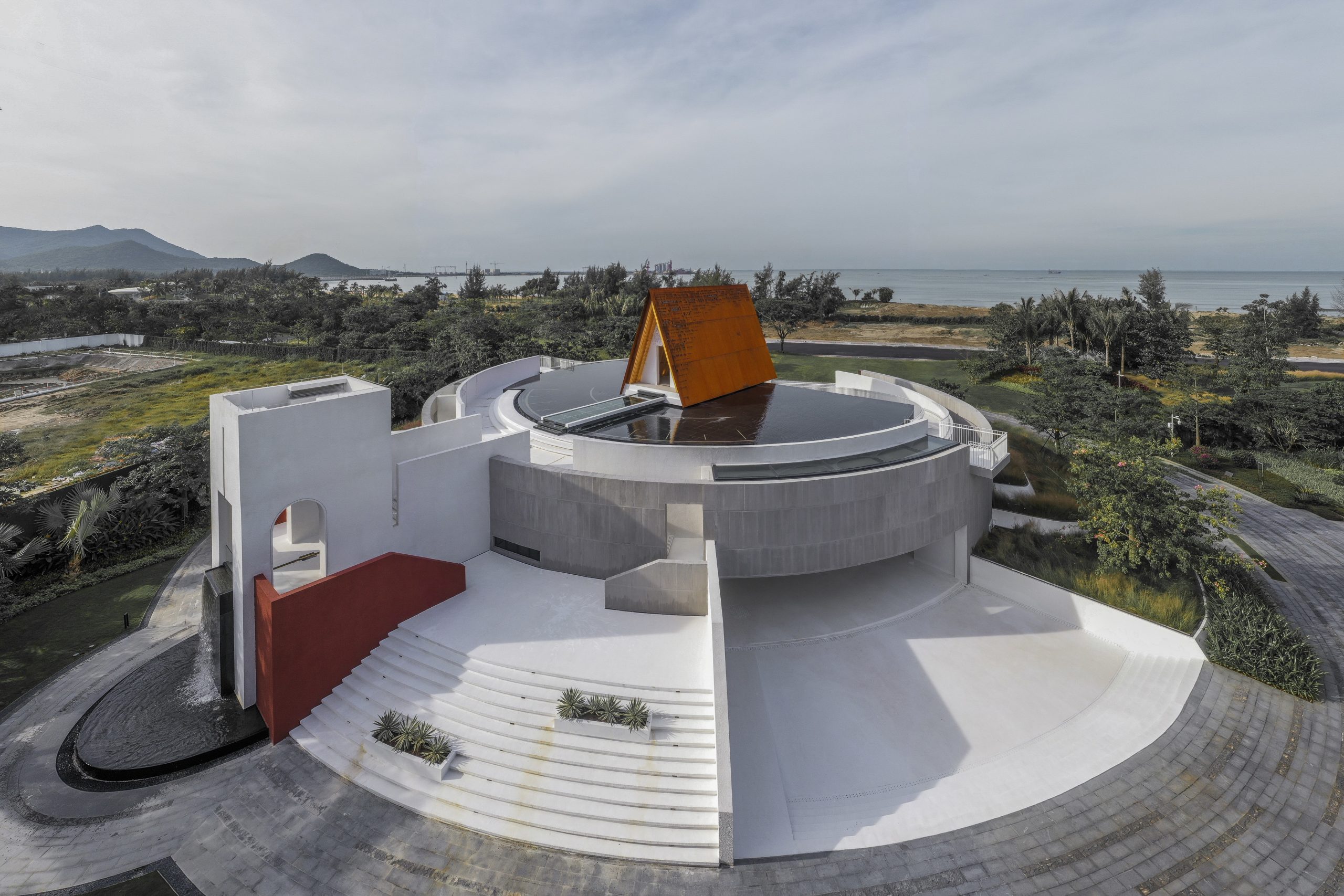 The form of the church is described by the architect as a triangle that pierces the sky and carries a strong spirituality. This triangular worship sits on top of a circular base that houses all the administrative and supporting functions of the church. The upper church structure is connected to a rotating mechanism at the base and can be turned to face the setting sun throughout the year.
The form of the church is described by the architect as a triangle that pierces the sky and carries a strong spirituality. This triangular worship sits on top of a circular base that houses all the administrative and supporting functions of the church. The upper church structure is connected to a rotating mechanism at the base and can be turned to face the setting sun throughout the year.
Adding dynamic elements to religious buildings is a newer trend. This eliminates some of the physical constraints of sites and allows the design to accommodate more principles and norms that govern worship rituals.






 Autobahn Church
Autobahn Church  Bosjes Chapel
Bosjes Chapel  Capilla del Lago
Capilla del Lago  Community Church Knarvik
Community Church Knarvik  Our Lady of Fátima Chapel
Our Lady of Fátima Chapel  Saemoonan Church
Saemoonan Church  Sayama Forest Chapel
Sayama Forest Chapel  The Bahá’í Temple of South America
The Bahá’í Temple of South America 


